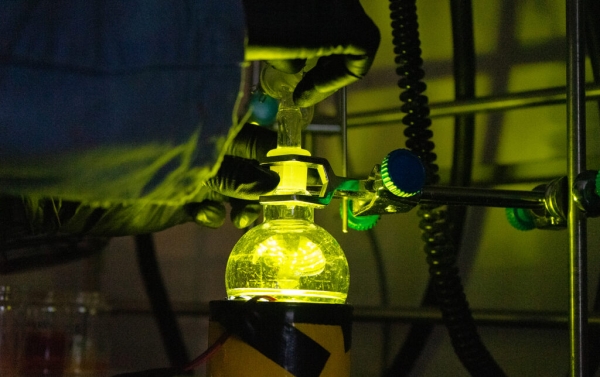Researchers at Colorado State University have found a new approach for breaking down PFAS – a group of human-made “forever” chemicals commonly used for their water-resistant properties that can carry health risks from long-term exposure.
The carbon-fluorine bond found in PFAS (perfluoroalkyl and polyfluoroalkyl substances) compounds is particularly challenging to break apart. That durability has led to widespread use of these manufactured chemicals in medical, industrial and commercial settings. However, that inherent stability has also made them difficult to dispose of, and over time, they have made their way into water, air and soil across the world according to the Environmental Protection Agency. The EPA says exposure to these lingering compounds can lead to health problems, including cancer or reproductive issues.
In a paper published today in Nature, CSU researchers showcase an effective LED light-based photocatalytic system that can be used at room temperature to break down those key carbon-fluorine bonds. The system is an improvement over traditional chemical manufacturing processes that typically require high temperatures to achieve similar results.
Read more at: Colorado State University
Chemistry researchers work in the Miyake Lab at Colorado Sate University (Photo Credit: Colorado State University)
Sustainability Sci/Tech Top Stories Pollution Ecosystems

